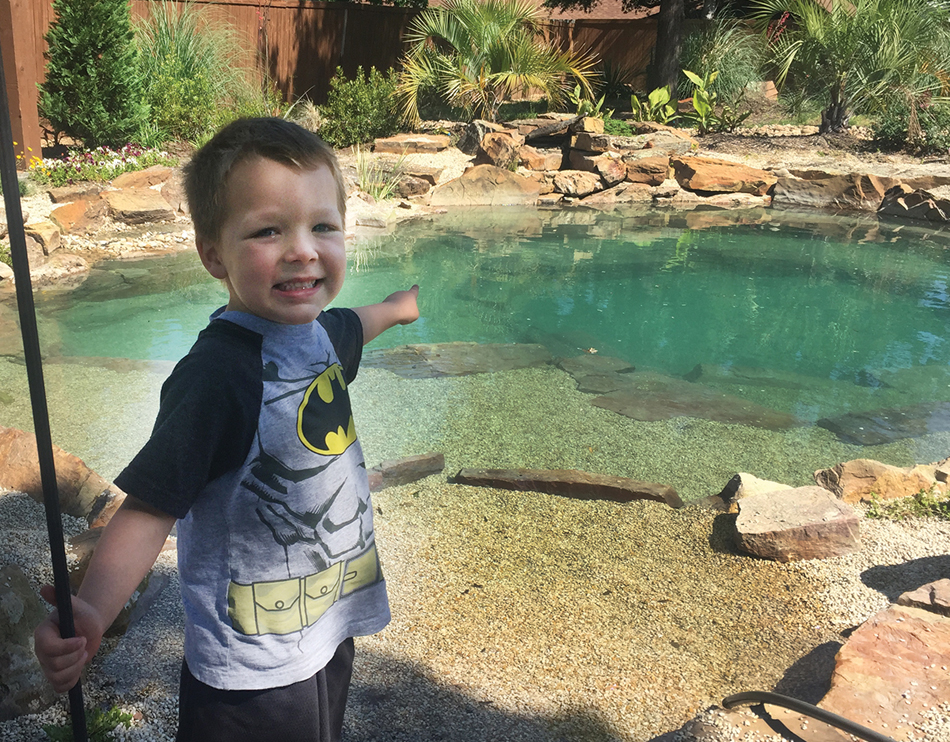If you own a backyard pond in Dallas, you’ve probably come across string algae. It’s the green, stringy stuff that sticks to rocks and sometimes floats in the water. At FncPonds, one of the most common questions we hear is, “What can I do about string algae?” While this type of algae can be annoying, a little bit is totally normal—and even helpful. The key is knowing how to keep it in check without throwing off your pond’s ecosystem.
What is String Algae?
String algae are long strands of algae that attach to surfaces like rocks and pond walls. You might also see them floating in bunches. This algae naturally shows up in living ponds, especially those with fish and plants. In small amounts, string algae absorb extra nutrients and even help oxygenate the water. Plus, they provide shelter for tiny organisms that keep your pond in balance.
When It Becomes a Problem
While a little string algae is fine, too much can cause real trouble. Here’s how you’ll know it’s getting out of hand:
- Thick mats are floating on top of the pond.
- Algae is clogging your pond’s pump or waterfall.
- The water looks messy and uninviting.
Too much string algae can:
- Lower oxygen levels as it decays, making it harder for fish to thrive.
- Block sunlight and take nutrients away from other plants.
- Make your pond look untidy and less enjoyable.
How to Handle String Algae the Right Way
At FncPonds, we focus on keeping your pond clean in a way that works with nature. Here are some of our favorite methods to control string algae:
1. Remove It by Hand
Use a pond net, brush, or your hands to pull out large patches of string algae. It’s a quick way to make your pond look better and remove some of the nutrients that algae feed on.
2. Add Helpful Bacteria
Beneficial bacteria break down extra waste in your pond like leftover fish food, plant material, and fish waste. By reducing this waste, there’s less food for algae to grow. You can add these bacteria as part of regular pond care.
3. Use Targeted Algae Treatments
If string algae keeps coming back in specific areas like waterfalls or streams, try a spot treatment with a pond-safe algaecide, like EcoBlast. Just treat the problem spot—not the whole pond—to avoid upsetting the pond’s oxygen levels.
4. Install an IonGen System
An IonGen system releases tiny amounts of copper into the water. This makes it harder for algae to grow, especially in hard-to-reach areas. It’s safe, low-maintenance, and works well in most ponds.
Strengthen Your Pond’s Natural Defenses
The best way to fight algae is to make your pond’s ecosystem stronger. Think of it like this: if you plant enough flowers in a garden, weeds don’t have much space to grow. Here’s how to help your pond stay naturally balanced:
- Add more pond plants: Water lilies and floating plants block sunlight and use up nutrients before algae can.
- Use gravel on the pond floor: Small gravel gives koi and goldfish a place to dig, which keeps algae from settling.
- Let your fish graze: Koi and goldfish love to snack on string algae. You can skip feeding them now and then so they eat what’s in the pond.
Why Algae Grows in Spring
In Dallas, many pond owners notice algae blooms in early spring. That’s because the water is warming up, but your pond’s good bacteria haven’t fully kicked in yet. Don’t worry! Scoop out what you can and keep using beneficial bacteria. As your pond adjusts, the algae will start to slow down.
Be Cautious with Chemicals
Some pond owners try to clear up algae with chemical treatments. These can work fast, but they’re not always the best idea long-term. Chemicals can hurt the balance of your pond. If you do use them, always remove any dead algae so it doesn’t rot and lower the oxygen in the water.
Final Thoughts from FncPonds
String algae isn’t your enemy—it’s just a part of a living, breathing pond. The goal isn’t to get rid of all of it, but to manage it so your pond stays healthy and beautiful.
Quick recap:
- A little string algae is okay.
- Remove large patches by hand.
- Use helpful bacteria and add more plants.
- Try safe spot treatments or an IonGen system.
- Be cautious with chemical use.
At FncPonds in Dallas, we’re here to help you enjoy a pond that looks great and stays in balance with nature. Need help getting started or want expert support? Contact us for a pond checkup or maintenance plan today!






